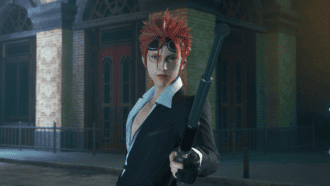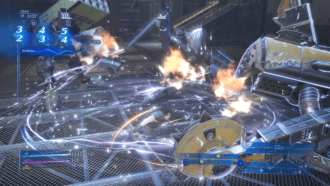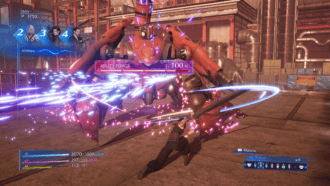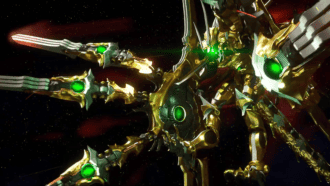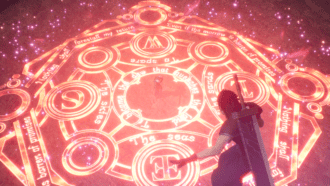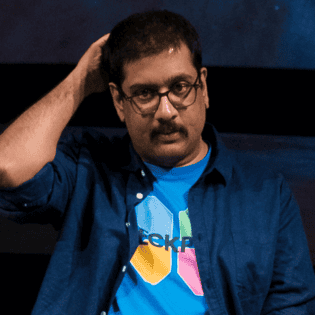Platforms:
Xbox One, PS4, PC, Nintendo Switch, PS5, Xbox Series X|S
Released:
December 13, 2022
Publisher:
Square Enix
Developers:
Square Enix, TOSE CO., LIMITED
Crisis Core: Final Fantasy VII Reunion is aimed at three different audiences. The first are fans of Final Fantasy VII who wanted more context on Zack Fair, one of the game’s most important characters. The second are those who got into FFVII (and Final Fantasy at large) through 2020’s Final Fantasy VII Remake and are wanting more. The third are folks like me, who enjoyed Crisis Core on PSP and wanted it playable on modern consoles. After finishing the game, I can say that all three audiences are well served, but the third best of all. With recreated assets, reanimated faces, and additional mechanics, Reunion is an outstanding example of a “remaster” going above and beyond what that word normally means. Plus, the story is unchanged from its PSP counterpart, adding nothing new to fit in with the FFVII Remake or hint towards its sequel, showing a smart level of restraint.
This Is Your Life(stream)
I covered some of the basics in my preview last week, but for the uninitiated, Crisis Core is set seven years before the start of Final Fantasy VII. Its sole protagonist is Zack, a 2nd class SOLDIER who dreams of becoming 1st, who has to deal with internal turmoil at Shinra, the company he works for. The game’s 10 chapters see Zack uncover the mystery surrounding three members of 1st Class, while befriending characters from the game that this is a prequel to.
I couldn’t help but compare Crisis Core Reunion to its PSP version as I played, and found that apart from some slight tweaks to the script, the narrative is exactly the same. Zack’s story isn’t perfect – all the talk of “honour” and “dreams” is rarely written well, being vague and cryptic but with no subtext. The way new characters are retconned into events from the PS1 game ranges from meaningful to cringe – but the game’s popularity comes in part from how likeable Zack is. His strength doesn’t come from any superpowers or prophecies. He’s just a normal guy who wants to be a hero, not for praise, but so he can feel good about himself. Crisis Core Reunion retains the PSP version’s whopping 300 side quests (more on those later) and it’s believable that Zack would take that many detours from work to help people because he cares deeply about everyone he meets.
SOLDIER Boys
One name that’s mysteriously absent in Reunion’s credits is Hajime Tabata, Crisis Core’s director. Tabata went on to direct Final Fantasy XV and left Square Enix partway through the development of that game’s DLC content. Crisis Core and FFXV have a lot in common thematically, because they both share Tabata’s penchant for highlighting emotional vulnerability in men. In contrast to FFVII’s stick-in-the-mud hero Cloud, Zack isn’t afraid to talk about his feelings or have a cry when things get too much. Even since 2007, this is something rarely seen in AAA games, so it’s great to see it in a dude-focused action RPG. In contrast, FFXV and Crisis Core also share some bad storytelling habits, mainly in how women are written.
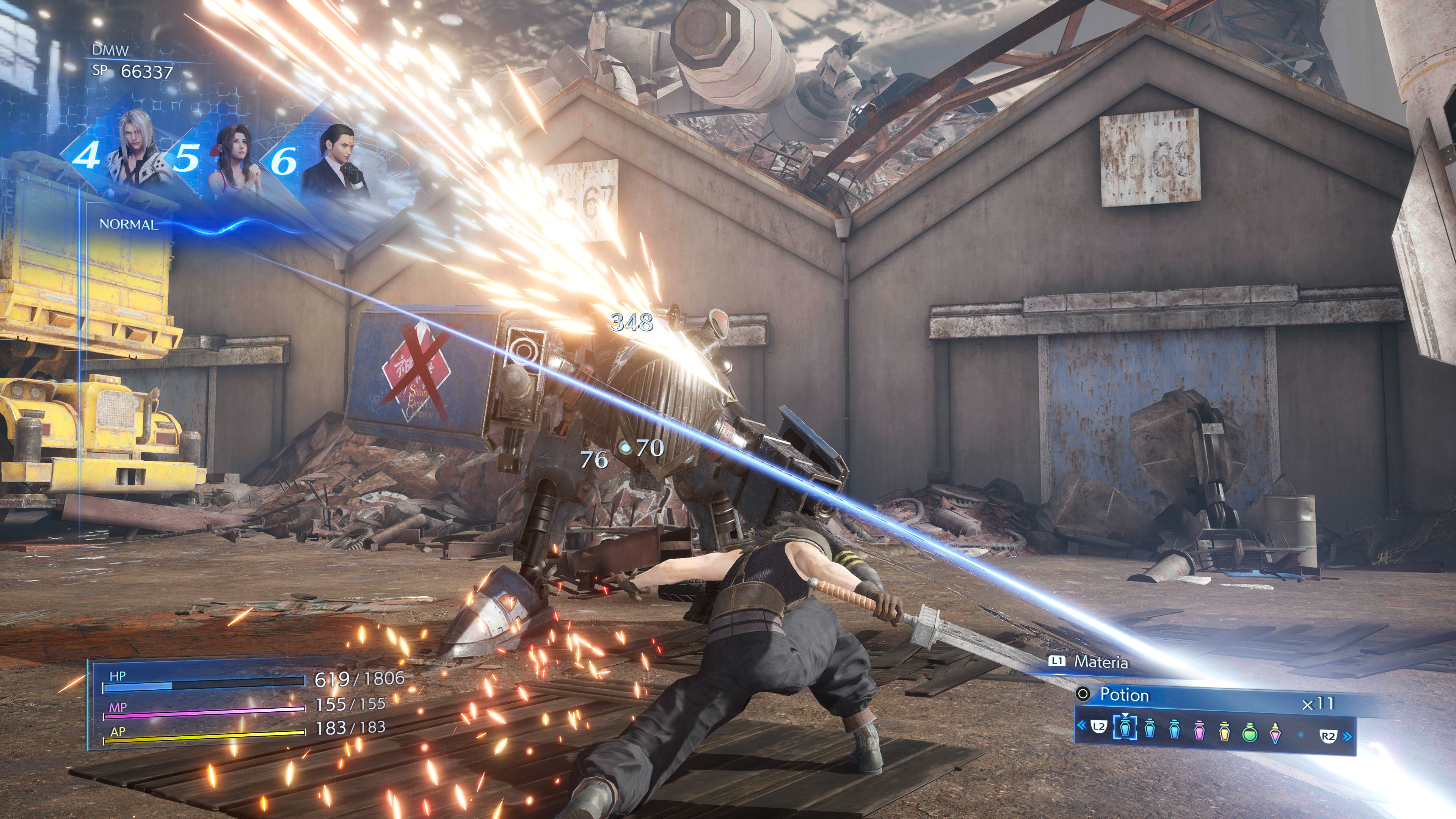
Final Fantasy VII originally depicted Aerith as confident, headstrong, and occasionally reckless, subverting how healers are typically written. But later sequels and prequels portrayed her as meek and humble, Crisis Core included. Final Fantasy VII Remake made strides to correct this, but even with Remake’s Briana White returning to voice Aerith in Reunion, it sometimes feels like she’s playing a different character. There are only two other women in the story, who play important roles but only appear in a handful of scenes each. Crisis Core is also the only Final Fantasy game featuring the series’ traditional recurring summons, Ifrit and Bahamut, to have no mention of Shiva, the final member (and only woman) of that trio.
From The (Deep)Ground Up
Japanese studio Tose co-developed Crisis Core Reunion. They have been known to work on Final Fantasy ports and remasters for decades, including last year’s Pixel Remasters of the first six, but never anything on this scale. The skeleton of the PSP game stays the same, but the fundamental art style has been changed to match FFVII Remake. Unlike 2016’s inconsistent remaster of Final Fantasy Type-0 (the next PSP game directed by Tabata), Reunion makes the effort to give new models to every single character, including nameless NPCs on the street. Windows no longer look painted onto walls, and lighting is more realistic. There are also small valuable additions to the controls, such as a sprint, full control of the camera, marking quest-relevant NPCs on the map, and the option to skip cutscenes.
Crisis Core’s contentious mandatory minigames have also been slightly updated. I personally didn’t enjoy them as a child, since they were obtusely explained and impossible to avoid, including a heinous stealth section halfway through the story. In this case, the UI now shows you where you can hide, something the PSP version left to guessing. These minigames and side activities are still the least interesting parts of Crisis Core, but they’re more tolerable now.
“Missions are perfect for when you want to wind down with a podcast in the background.”
A new inconsistency Crisis Core inherited since the release of Final Fantasy VII Remake is in location design. Final Fantasy VII mostly used hand-drawn backgrounds on PS1, and Crisis Core faithfully recreated those environments in 3D. The Remake, then, redesigned these locations completely to better suit its systems and to be far more visually impressive. For example, it might be jarring for some players to see Shinra Headquarters look quaint and homely in Crisis Core compared to its role as the staggering final dungeon of the Remake, even though the layout is mostly the same. This could also apply to locations like Junon and Costa Del Sol, which are yet to be seen in the Remake trilogy, but probably won’t look like they do here. This isn’t necessarily a bad thing, just a quirk of interpretation to keep in mind.
Speaking of summons, Crisis Core on PSP was impressive in how it seamlessly cut from the middle of battle to an extravagant pre-rendered FMV of a summon’s attack, and back, with no visible loading. This is no longer interesting thanks to modern hardware, but the FMVs themselves have been completely redone. Ifrit and Bahamut now use their designs from Remake, but other summons have also been redesigned, perhaps hinting that this is how they’ll appear in next year’s Final Fantasy VII Rebirth.
It’s strange then, that the PSP version’s story FMVs are the same, awkwardly blown up to fit modern screens, with pixelation clearly visible. What’s more, these scenes use the old art style and character models, which seem out of place here. But if you’re able to ignore their age, these scenes still hold up, particularly the ending, which hits a perfect sweet spot between emotional and corny. Altogether, this is a fantastic technical achievement as a remaster, and we haven’t even gotten to the new elements added to combat.
Zack ‘n’ Slash
In my preview, I was personally dismayed at the removal of Modulating Phase (which paused combat to zoom in on the Digital Mind Wave, a roulette wheel that randomly decides when you execute your powerful Limit Breaks, and even when you level up with the EXP you earned). However, I recognise the change was made to keep the fast momentum of combat. As I kept playing, I realised that, as a result, Limit Breaks trigger far less often than before. Modulating Phase used to heighten tension by randomly slowing down the DMW at critical moments. These slowdowns still happen, but you can just finish the fight by hand instead of waiting, and it’s usually the more efficient option. Still, I believe this was the best way to modernise the DMW for modern audiences, and it remains one of my favourite mechanics in any RPG. It lets you earn rewards but delays when you get those rewards, injecting a lot of unpredictability and variety into this one-character game.
Reunion keeps Crisis Core’s Materia Fusion system with only minor UI updates. Much like Final Fantasy VII and Remake, Materia are little orbs that, when equipped, let you use spells, abilities, or passive stat boosts. They also level up over time, in this case randomly on the DMW. Materia Fusion lets you take two materia and combine them into something greater. Materia Fusion encourages you to play around and experiment, and it’s not hard to rig the system to give you massive boosts that may feel cheap. It’s all part of the fun.
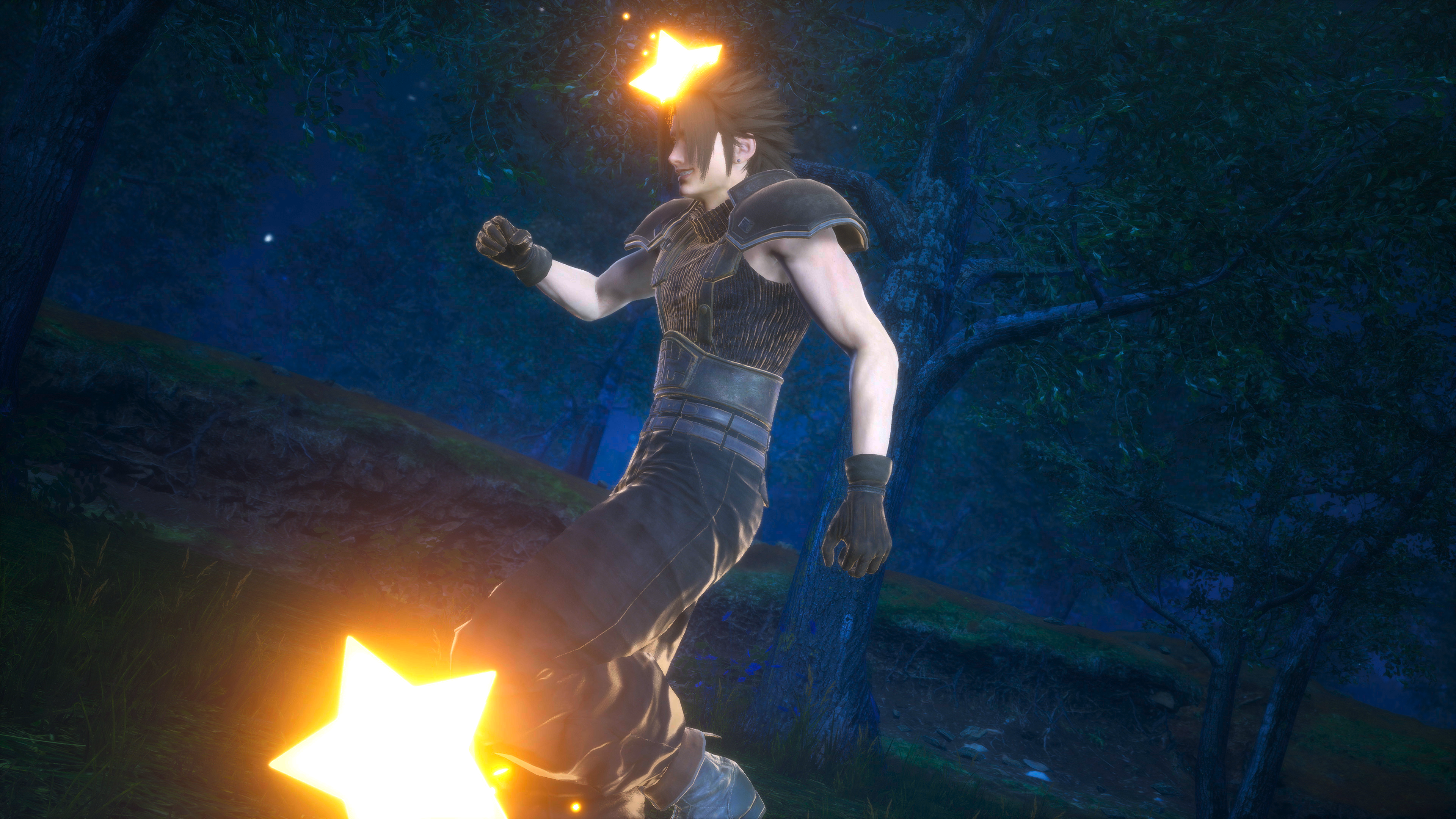
Reunion throws in new battle mechanics halfway through the game to make more use of your physical abilities, which were slightly outclassed by spells in the PSP version. You get a switchable Battle Stance based on Cloud’s gameplay from FFVII Remake, giving you a new advantage against certain enemies. And you eventually get graded at the end of every battle, rewarding you with HP, MP, and AP depending on how well you fought, letting you use your flashy spells and abilities more often.
The pace of combat may come across as old school, but the approachability should be lauded. Enemies telegraph their attacks clearly, and Zack is able to dodge out of the way of any enemy ability save the battle-pausing cutscene kind, as long as you time it right. And speaking of enemy cutscene attacks, Reunion now gives you a few seconds to hack at the enemy as they charge their powerful move, weakening or outright cancelling it if you’re quick enough. But still, this is an RPG, and some enemies simply have too high of stats for you to fight. In these situations, some players may be compelled to grind for levels. Whether or not that’s your interest, Crisis Core actively encourages it with its Missions.
Mission Uncountable
I saw some groans on Twitter when the marketing for Crisis Core Reunion announced the game would have 300 sidequests, known as Missions. They’re phrased like a new feature, but they’re not. A Mission rarely lasts longer than 5 minutes, and they’re completely optional, but you’re encouraged to do as many as you can. Completing them can unlock new Missions as well as important bonuses, like extra equipment slots or new abilities for the DMW. You’re still grinding, but the game constantly rewards you for it.
Most Missions are unlocked by completing other Missions, but a handful are only unlocked by talking to the right NPCs during the right chapters, or else they are lost forever. Thankfully, Reunion’s map now marks every important NPC to talk to each chapter, which alleviates that small issue.
The Missions are extremely repetitive, most sending you to a short dungeon to collect some chests and fight a miniboss. There are only a few different dungeon types, so they repeat themselves constantly, which is obvious even with Reunion’s updated environments. This sounds bad (and I guess it is, bear with me) but these were deliberate choices for when the game was on PSP, as the Missions’ repetition was perfect for bite-sized handheld play sessions. As a kid, I remember playing through Missions when I was at a family event and couldn’t play with the sound on but still wanted to ignore my family. Perfect.
I was initially apprehensive about playing Crisis Core Reunion on PS5, assuming the game would be best suited for the Switch, since it’s the only modern handheld. But even on a home console, Missions are perfect for when you want to wind down with a podcast in the background, thanks to the engaging battle system. I finished Crisis Core Reunion with 26 hours on the clock, with 45% of Missions completed, and have since gone back to continue mopping them up. I can’t guarantee I’ll finish them all (since I technically already did on PSP), but they’re much more entertaining than I expected. Still, not everyone has the nostalgia goggles I do, so Missions may be tedious if they don’t suit your playstyle.
8.5
Great
Positive:
- An outstanding update and recreation of the PSP original
- Meaningful updates to combat and exploration
- The DMW is as sexy as ever, and more flexible
- Zack's story is a tearjerker
Negative:
- Limit Breaks aren't as frequent as before
- Clunky exploration of narrative themes
- Portrayal of women is a missed opportunity
For fans of the OG PSP game, Crisis Core Reunion is a fantastic remaster, seeing how meticulously a game can be updated with enough budget behind it. For fans of Final Fantasy VII on PS1, this is an opportunity to play the best game in the original Compilation (no offence to Dirge of Cerberus) on modern consoles. Its many changes and additions help bring these PSP mechanics closer to modern standards and the game is better off for it. For fans of Remake keen to understand more of this world and characters, Crisis Core is a great amuse-bouche before Rebirth launches next year.
